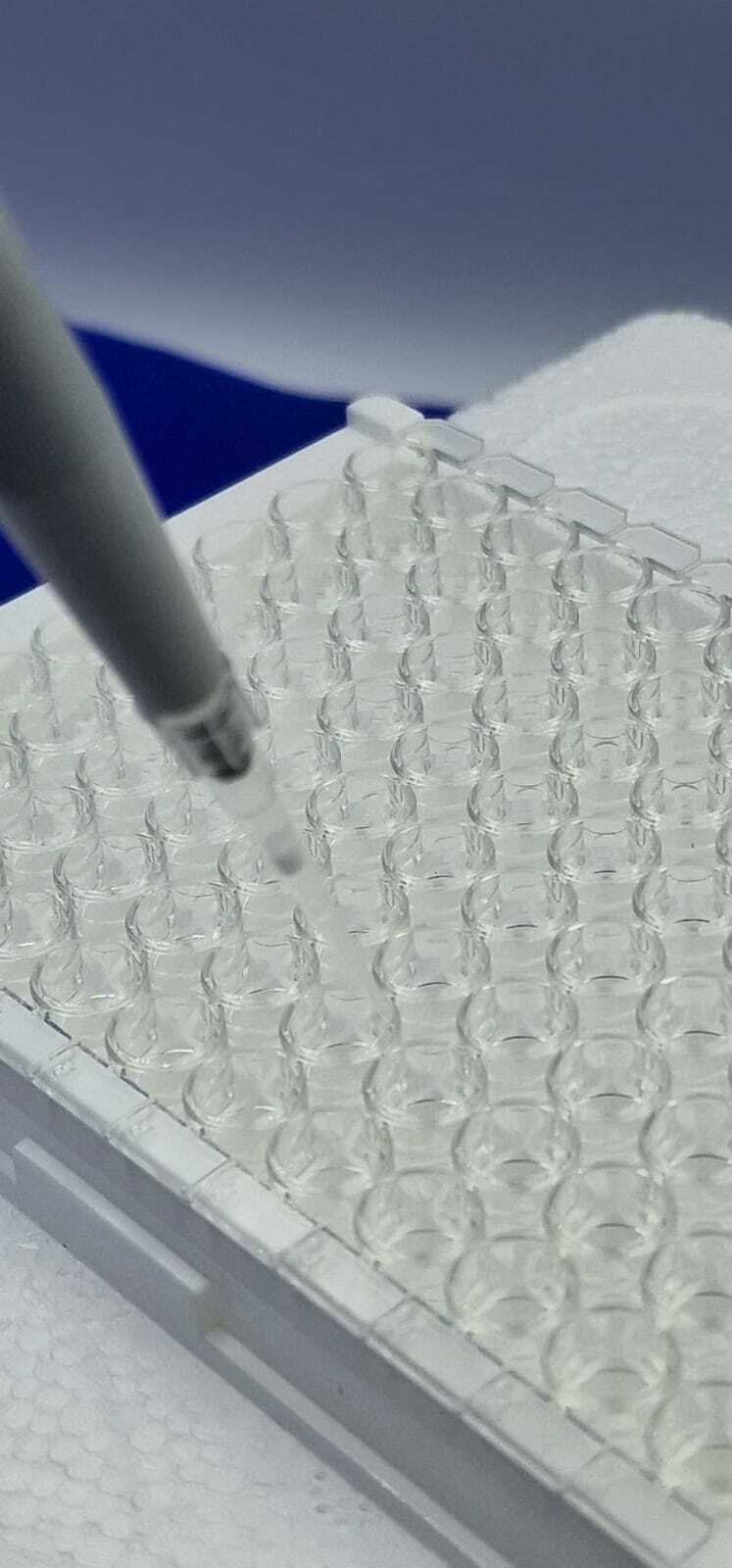Elisas
Human ELISA kit

A Human ELISA (Enzyme-Linked Immunosorbent Assay) kit is a laboratory tool used for the quantitative measurement of specific proteins or molecules in human samples, such as serum, plasma, urine, or cell lysates. ELISA kits are pre-assembled sets of reagents and materials designed for the enzyme-linked immunosorbent assay (ELISA) technique. These kits provide researchers and laboratories with a convenient and reliable method for detecting and quantifying specific proteins, antibodies, and hormones in a sample. ELISA kits contain essential components such as coated plates, antibodies, enzyme-conjugated reagents, substrates, and stop solutions. They may also include instructions and guidelines for the assay's execution.There are different types of ELISA kits available, including coated plates with various targets for flexibility, uncoated kits for experienced users, antibody pair kits with pre-matched antibodies, and development kits for designing new ELISA protocols. Some kits may offer easy-to-use and flexible options, while others may provide high-quality optimized kits for accurate and consistent results.ELISA kits can be used to detect and quantitate various analytes, such as proteins, antibodies, and hormones, in various sample types, including serum, plasma, cell culture media, cerebrospinal fluid (CSF), cell lysates, saliva, urine, and tissue homogenate. They are also suitable for different sample types, such as human, mouse, rat, canine, feline, horse, monkey, bovine, swine, ovine, porcine, rabbit, and salmon.ELISA kits are designed to provide convenience and sensitivity in quantifying targets, and they are often more cost-effective compared to other leading manufacturers and suppliers. They are widely used in research and clinical settings for the diagnosis and monitoring of various conditions, including infectious diseases, autoimmune disorders, and hormonal imbalances.

ELISA kits are widely used in research, diagnostics, and drug discovery processes. Below is an explanation of the operational process of a standard Human ELISA kit:
Principle:
ELISA kits employ an antibody-antigen interaction principle. The kit contains pre-coated microplates with capture antibodies specific to the target protein of interest.
Sample Preparation:
Human biological samples (such as serum or plasma) are collected from individuals and prepared according to the kit instructions. This may involve diluting the samples to ensure that they fall within the detection range of the assay.
Incubation:
The prepared samples, along with standards of known concentrations, are added to the wells of the microplate. These standards help to generate a standard curve for quantification.
Antibody Binding:
During the first incubation step, the target protein in the sample binds to the capture antibody immobilized on the microplate surface.
Washing:
After the incubation period, the microplate is washed to remove any unbound substances, such as nonspecific proteins or contaminants.
Detection:
A detection antibody, conjugated to an enzyme such as horseradish peroxidase (HRP) or alkaline phosphatase (AP), is added to each well. This antibody recognizes a different epitope on the target protein and binds to it, forming a sandwich complex (capture antibody - target protein - detection antibody).

Washing:
After another incubation period, the microplate is washed again to remove any unbound detection antibodies.
Substrate Addition:
A substrate solution containing a chromogenic or fluorogenic substrate specific to the enzyme conjugated to the detection antibody is added to each well. The enzyme catalyzes a reaction with the substrate, resulting in the generation of a detectable signal (color change for chromogenic substrates, or fluorescence for fluorogenic substrates).
Signal Measurement:
The intensity of the generated signal is directly proportional to the amount of target protein present in the sample. The signal is measured using a microplate reader, which quantifies the optical density (OD) of each well at the appropriate wavelength.
Data Analysis:
The OD values obtained from the standards are used to generate a standard curve, which is then used to interpolate the concentrations of the target protein in the samples.
Human ELISA kits are available for a wide range of analytes, including cytokines, growth factors, hormones, enzymes, and disease markers. They provide a sensitive, specific, and quantitative method for the detection and measurement of proteins in biological samples, making them valuable tools in biomedical research and clinical diagnostics.
There are no products listed under this category.
